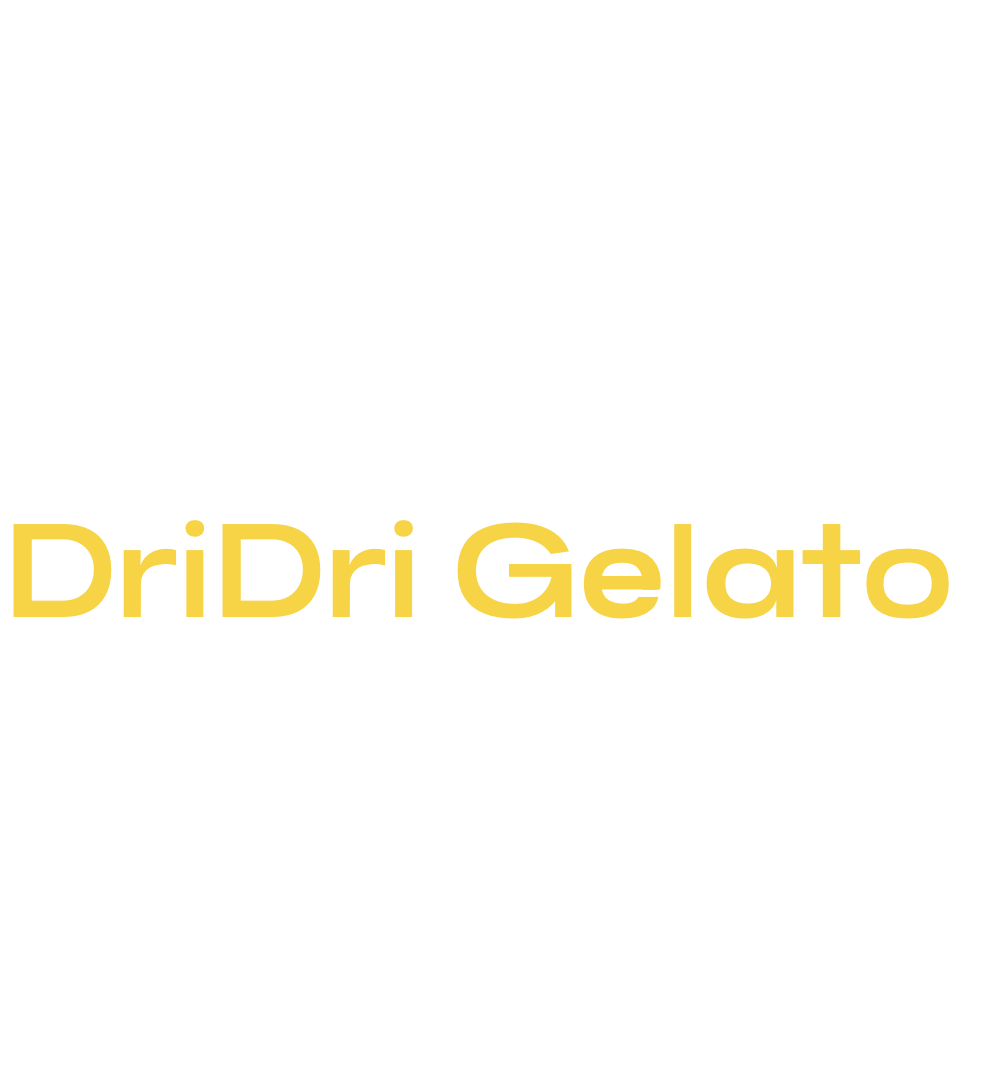Popular Flavors
Differentiating Between Ice Cream and Gelato

Ever curious about the difference between ice cream and gelato? We have the details for you!
In this article, we’ll delve into the distinct ingredients, textures, serving temperatures, cultural origins, and flavor varieties of these frozen treats.
Get ready to satisfy your curiosity and indulge in a delightful journey through the world of ice cream and gelato.
So sit back, relax, and prepare to be tantalized by the unique characteristics that make each of these frozen desserts so special.
Key Takeaways
- Gelato has a higher proportion of milk to cream, resulting in a denser and smoother consistency compared to ice cream.
- Ice cream has a higher fat content due to the use of more cream, giving it a richer and creamier mouthfeel.
- Gelato is typically served at a slightly warmer temperature for a softer and smoother consistency.
- Gelato offers unique and innovative flavor options, while ice cream tends to have classic flavors.
Ingredients: What Makes Ice Cream and Gelato Distinct
When differentiating between ice cream and gelato, understanding the ingredients used is crucial. Gelato ingredients differ from ice cream ingredients, resulting in distinct textures and flavors.
Gelato is made with a higher proportion of milk to cream, giving it a denser and smoother consistency compared to ice cream. It also contains less air, making it more intense in flavor.
Ice cream, on the other hand, has a higher fat content due to the use of more cream. This gives it a richer and creamier mouthfeel. Additionally, ice cream often includes stabilizers and emulsifiers to improve texture and prevent ice crystals from forming. Gelato, however, typically doesn’t contain these additives.
Understanding the specific ingredients used in each frozen treat is essential to appreciate and differentiate their unique qualities.
Texture: How Do Ice Cream and Gelato Differ in Texture
To understand the differences in texture between ice cream and gelato, we must examine their unique characteristics. When it comes to texture, ice cream and gelato have distinct qualities that set them apart.
Here is a comparison of the two:
- Ice Cream:
- Creamier and denser texture
- Contains more fat and air, giving it a smoother mouthfeel
- Takes longer to melt due to its higher fat content
- Gelato:
- Softer and silkier texture
- Contains less fat and air, resulting in a denser consistency
- Melts faster than ice cream, allowing the flavors to quickly burst in your mouth
Serving Temperature: Why Is Ice Cream Served Colder Than Gelato
Ice cream is served at a colder temperature than gelato for optimal enjoyment. Serving temperature plays a significant role in the taste and texture of these frozen treats.
When ice cream is served colder, it tends to be firmer and harder, allowing for a slower melt and a creamier mouthfeel. The lower temperature also helps to preserve its shape and prevent it from becoming too soft and runny.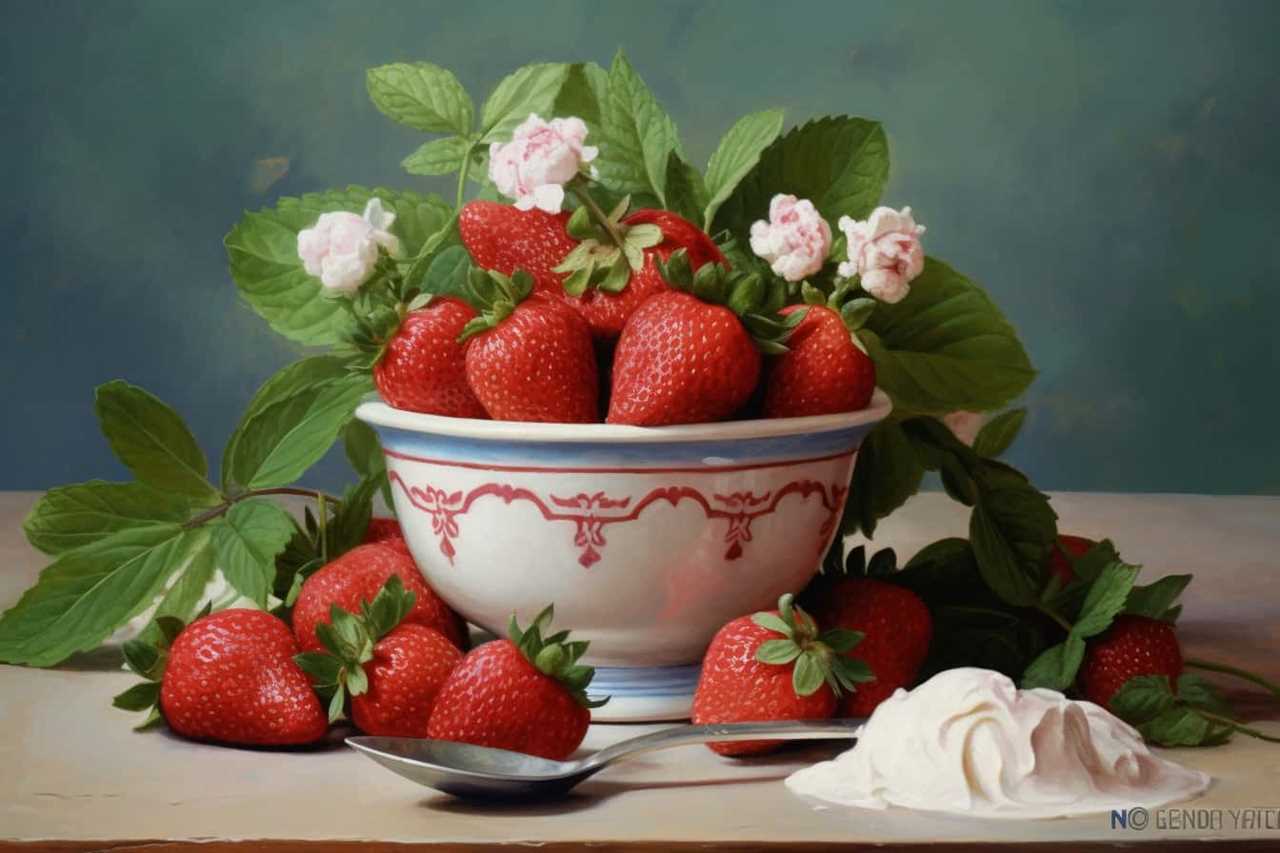
On the other hand, gelato is typically served at a slightly warmer temperature, which gives it a softer and smoother consistency. This warmer serving temperature allows the flavors of gelato to be more pronounced and the texture to be velvety on the palate.
Cultural preferences for serving temperature vary. For example, in Italy, gelato is often served at a slightly warmer temperature to enhance its flavors, while in the United States, ice cream is generally enjoyed at a colder temperature for a refreshing and icy experience.
Ultimately, the serving temperature of ice cream and gelato is a matter of personal preference and cultural tradition.
Cultural Origins: What Are the Historical Backgrounds of Ice Cream and Gelato
The historical backgrounds of ice cream and gelato can be traced back to their respective cultural origins. Understanding the historical significance and cultural influence behind these frozen treats gives us a deeper appreciation for their deliciousness.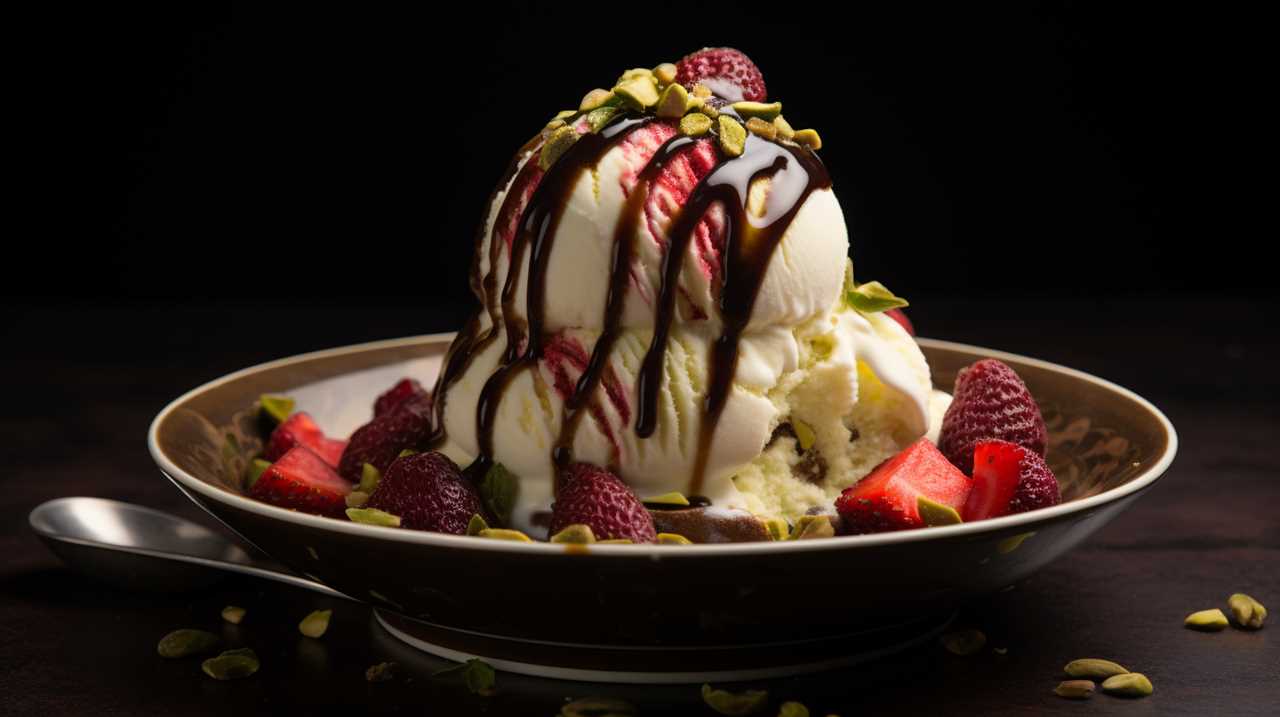
- Ice cream:
- Originated in China around 200 BC, where they used a mixture of milk and rice to create a frozen dessert.
- Introduced to Europe by Marco Polo in the 13th century, who brought back the recipe from his travels.
- Popularized in America during the 18th century, with the invention of hand-cranked ice cream makers.
- Gelato:
- Originated in Italy during the Renaissance period, where it was served exclusively to royalty and the wealthy.
- Developed as a creamier and denser version of ice cream, using a higher ratio of milk to cream.
- Became more accessible to the general public during the 17th century and has since become a beloved Italian dessert worldwide.
These historical backgrounds highlight the cultural influences that have shaped both ice cream and gelato into the beloved frozen treats we enjoy today.
Flavor Varieties: How Do Ice Cream and Gelato Differ in Terms of Flavors Offered?
Moving from the historical backgrounds of ice cream and gelato, let’s now explore how these frozen treats differ in terms of the flavors they offer. Ice cream and gelato both have a wide range of flavor profiles, but there are some distinct differences. Ice cream typically offers a variety of classic flavors such as vanilla, chocolate, and strawberry. However, gelato takes flavor combinations to the next level, offering unique and innovative options like salted caramel, pistachio, and hazelnut. Gelato also tends to have a richer, more intense flavor due to its lower butterfat content and slower churning process. To illustrate the differences, here is a table showcasing some popular flavors offered by both ice cream and gelato:
| Ice Cream Flavors | Gelato Flavors |
|---|---|
| Vanilla | Salted Caramel |
| Chocolate | Pistachio |
| Strawberry | Hazelnut |
| Cookies and Cream | Tiramisu |
With gelato’s emphasis on unique combinations and bolder flavors, it offers a more adventurous taste experience compared to traditional ice cream.
Frequently Asked Questions
Can Ice Cream and Gelato Be Made With the Same Ingredients?
Yes, ice cream and gelato can be made with the same base mix, but they have different ideal storage conditions. Ice cream is typically stored at a lower temperature, while gelato is best stored at a slightly higher temperature.
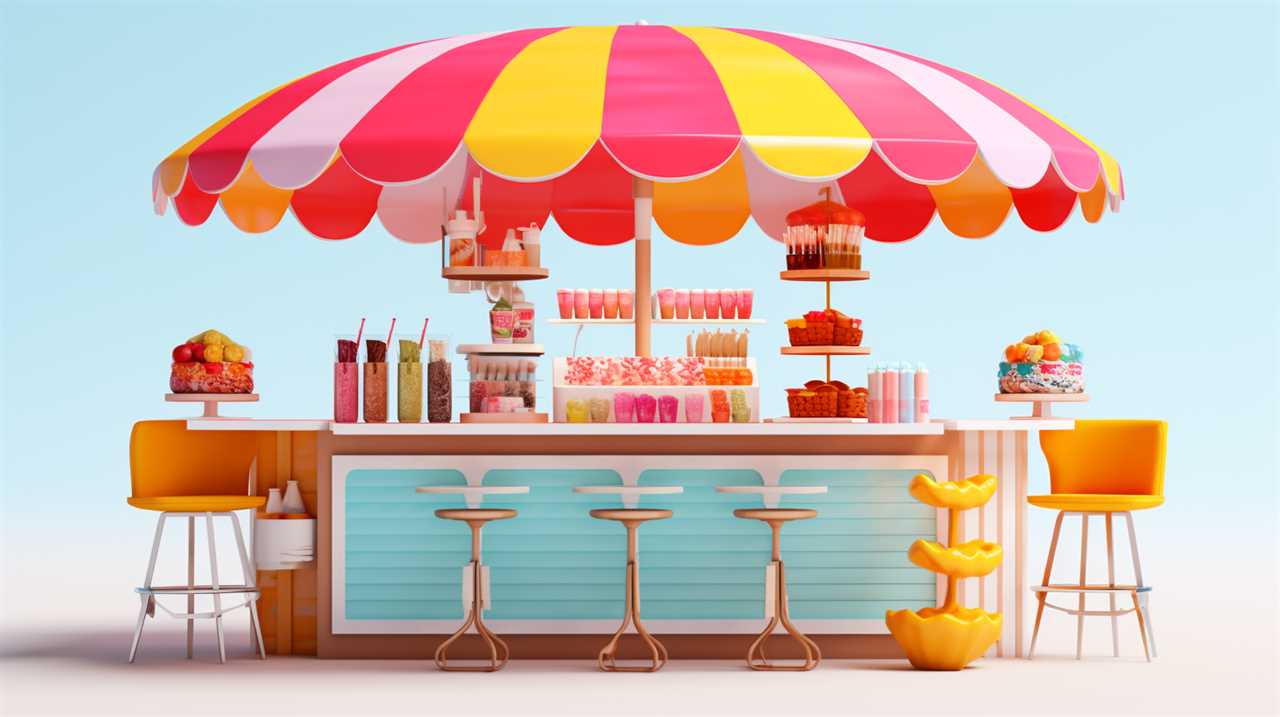
What Is the Ideal Serving Temperature for Ice Cream and Gelato?
The ideal serving temperature for ice cream and gelato is around 10-12 degrees Fahrenheit. To keep them at their best, store ice cream and gelato in a freezer set at -20 degrees Fahrenheit.
How Did Ice Cream and Gelato Spread to Different Parts of the World?
Ice cream and gelato spread to different parts of the world through various historical origins. They were introduced to new regions by explorers, travelers, and immigrants, leading to the global popularity we enjoy today.
Are There Any Specific Cultural Traditions Associated With Ice Cream and Gelato?
Ice cream and gelato have specific cultural significance and historical origins. They both hold a special place in our hearts, reminding us of childhood summers and indulgent treats.
How Do Ice Cream and Gelato Differ in Terms of Nutritional Content?
Ice cream and gelato differ in terms of nutritional value. Gelato has less fat and fewer calories than ice cream due to its lower butterfat content. However, specific calorie content varies depending on flavors and ingredients used.
Is Gelato also used for therapy purposes, like ice cream?
Yes, gelato is also used for therapy purposes, similar to ice cream therapy benefits. The soothing and comforting qualities of gelato can provide a sense of relaxation and emotional relief. The rich and creamy texture of gelato can offer a delightful sensory experience that can help improve mood and overall well-being.
Conclusion
In conclusion, ice cream and gelato may seem similar at first glance, but they differ in several key aspects.
From their ingredients and texture to serving temperature and cultural origins, these frozen treats have distinct characteristics.
The variety of flavors offered is also another factor that sets them apart.
As the saying goes, ‘Don’t judge a book by its cover,’ it’s important to appreciate the unique qualities of ice cream and gelato to truly savor the frozen delights they offer.
Beyond the realm of flavor and technique, Adriano recognizes the importance of sustainability and conscious consumption. His writing often explores eco-friendly practices within the ice cream industry, highlighting the use of locally sourced ingredients, reducing waste, and supporting ethical production methods.
Popular Flavors
Drawing Yummy Ice Cream in 10 Easy Steps
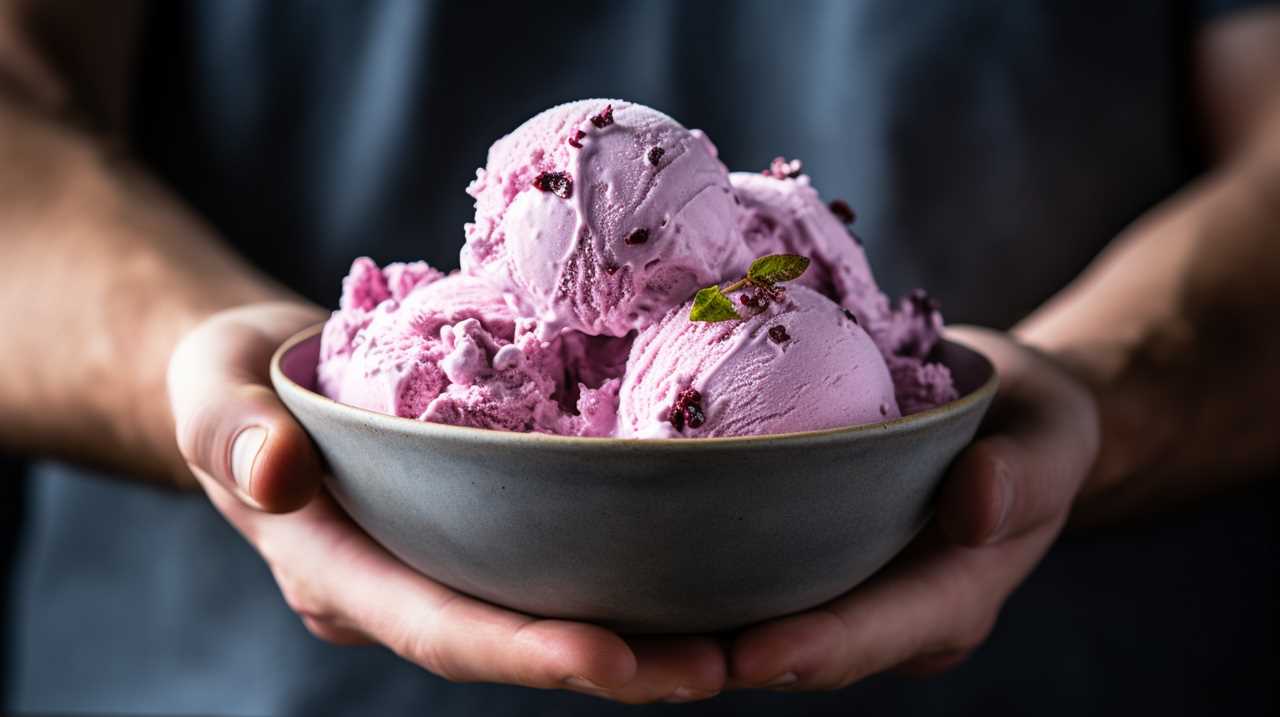
Have you ever wished to depict the delightful sweetness of an ice cream treat in a drawing? We’re here to guide you through the process of easily sketching ice cream!
Using the right materials and following our step-by-step directions, you’ll be creating mouthwatering ice cream cones in no time.
Imagine impressing your friends and family with your artistic skills as they gaze at your lifelike drawings.
Get ready to embark on a creative journey that will leave you craving both art and ice cream!
Key Takeaways
- Gather sketchbook or drawing paper, pencils or pens, colored pencils or markers, and eraser for materials and preparation
- Use short, curved lines to sketch the texture of the cone and employ shading techniques for dimension
- Use soft, curved lines to shape the scoops of ice cream and choose vibrant colors for different flavors
- Experiment with different toppings like chocolate sauce, caramel, sprinkles, crushed Oreos, fresh fruit, or gummy bears to add variety and texture
Choosing the Right Materials
First, we need to gather the necessary materials for drawing ice cream. Experimenting with different art styles and using different drawing techniques can add a unique touch to your ice cream drawings. To begin, you’ll need a sketchbook or drawing paper, along with a range of pencils or pens. Colored pencils or markers can also be used to add vibrant hues to your artwork. Additionally, consider using different textured papers or drawing surfaces to create interesting effects. Don’t forget to have an eraser handy for any mistakes or corrections. For more advanced techniques, you may want to try using charcoal or pastels for a more expressive and textured look. With the right materials, the possibilities are endless for creating deliciously beautiful ice cream drawings.
Sketching the Ice Cream Cone
Sketching the ice cream cone, we began by lightly outlining the basic shape using a pencil. To ensure accuracy, we referenced an image of an ice cream cone for guidance. Once the outline was complete, we moved on to adding the details. Using short, curved lines, we sketched the texture of the cone, giving it a realistic appearance. To create dimension, we employed shading techniques. By adding darker shading on one side of the cone and lighter shading on the other, we were able to achieve a three-dimensional effect. In the table below, we have provided examples of different coloring techniques that can be used to bring your ice cream cone to life:
| Technique | Description |
|---|---|
| Cross-hatching | Drawing parallel lines in two or more directions to create texture and shading. |
| Stippling | Using small dots to create shading and texture. |
| Blending | Using a blending tool or your fingers to blend different colors together for a smooth transition. |
With these techniques, you can experiment and find the coloring style that suits your ice cream cone drawing best.
Adding the Scoops of Ice Cream
After sketching the ice cream cone, we moved on to adding the scoops of ice cream. Now comes the fun part – coloring the ice cream and creating different flavors!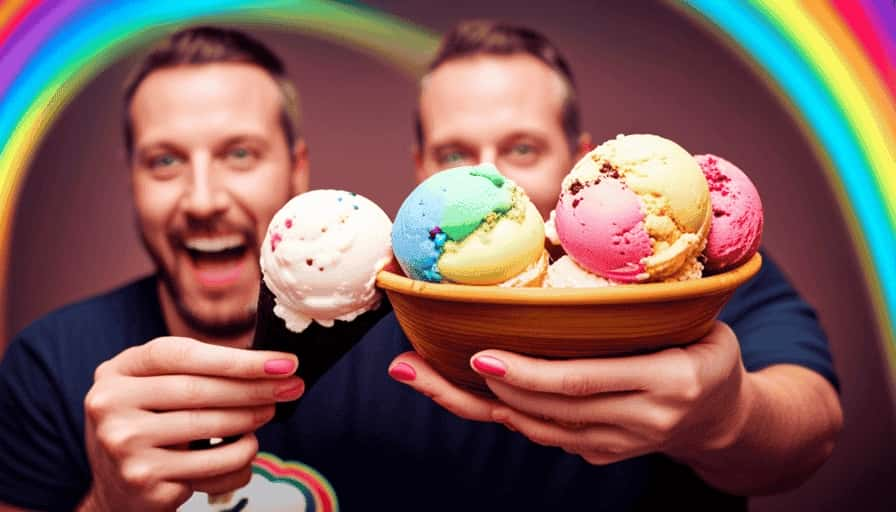
To make the ice cream look deliciously realistic, we used soft, curved lines to shape the scoops. We chose vibrant colors like pink for strawberry, brown for chocolate, and yellow for vanilla. Don’t be afraid to experiment with other flavors like mint, pistachio, or even bubblegum!
Remember to add some texture to your ice cream by lightly shading areas with a darker tone. This will give it a more three-dimensional appearance. Feel free to add toppings like sprinkles, chocolate sauce, or whipped cream to make your ice cream even more tempting.
Get creative and enjoy the process of bringing your ice cream to life!
Adding Delicious Toppings
Now, let’s move on to adding delicious toppings to our ice cream masterpiece.

Different types of ice cream toppings can take your creation to the next level. From classic favorites like chocolate sauce, caramel, and sprinkles to more adventurous options like crushed Oreos, fresh fruit, or even gummy bears, the possibilities are endless.
Get creative with your toppings and experiment with different combinations to find the perfect balance of flavors and textures.
Don’t forget about presentation! Decorating your ice cream cones in creative ways can make them even more enticing. Try dipping the edges of the cones in melted chocolate and rolling them in crushed nuts or colorful candy for a fun and visually appealing touch.
Let your imagination run wild and enjoy the sweet joy of adding those delicious finishing touches to your ice cream.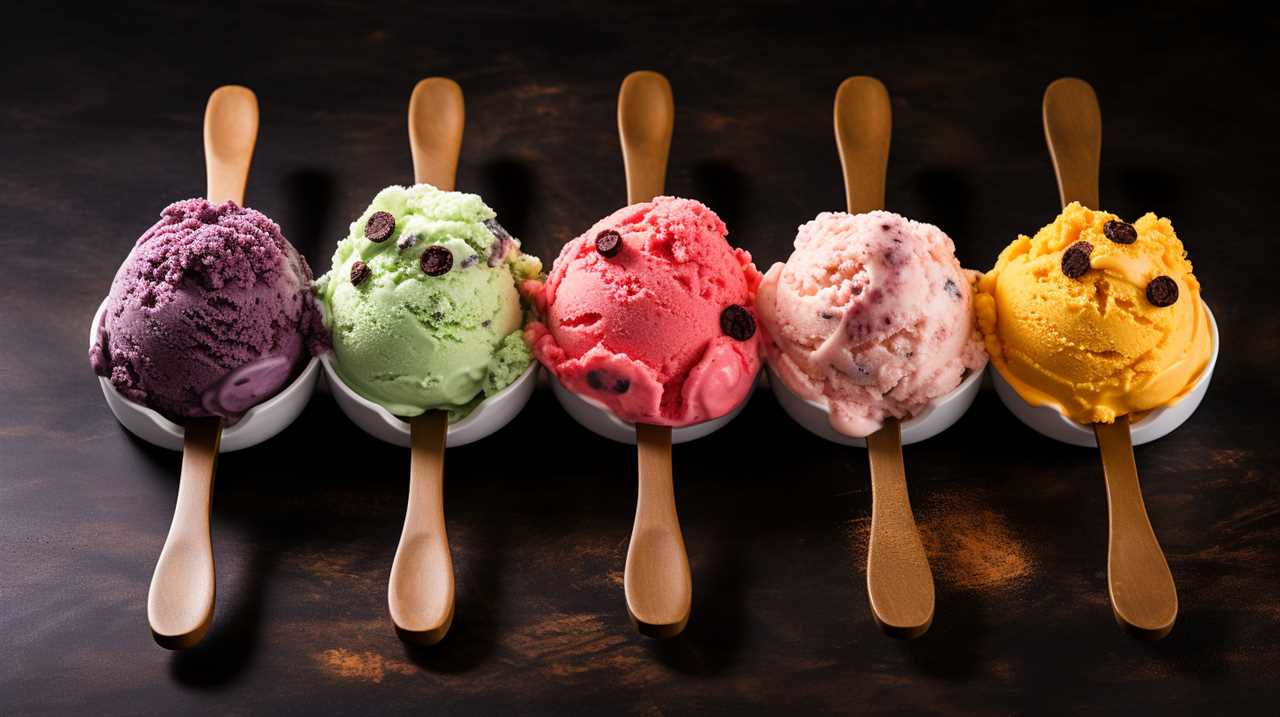
Finalizing the Details
To perfect our ice cream drawing, we frequently add the final details that bring it to life. Creating realistic textures is key to making our ice cream look tempting and delicious. We can achieve this by using short, curved lines to mimic the swirls and ridges found in real ice cream.
Adding shadows and highlights is another important step in finalizing the details. Shadows can be created by lightly shading the areas that are away from the light source, while highlights can be added by leaving some areas untouched or using a white pencil or eraser to create a shiny effect.
These small touches of light and shadow will give our ice cream drawing depth and make it appear more three-dimensional.
Frequently Asked Questions
How Long Does It Take to Master Drawing Ice Cream?
When it comes to mastering drawing ice cream, the time it takes varies. However, with alternative techniques and a focus on mastering shading, we can develop our skills more efficiently.
Can You Use Colored Pencils Instead of Markers for This Tutorial?
Yes, you can definitely use colored pencils instead of markers for this tutorial! Colored pencils offer more control and can create a softer, more realistic look. Just remember to layer and blend colors for a deliciously lifelike ice cream drawing.
Are There Any Alternative Methods for Sketching the Ice Cream Cone?
There are indeed alternative methods and different techniques for sketching the ice cream cone. We can explore various approaches like using shading techniques, experimenting with different pencil strokes, or even adding texture to create a more realistic and delicious-looking ice cream cone.
What Are Some Common Mistakes to Avoid When Drawing Ice Cream?
Common mistakes when drawing ice cream include not paying attention to proportions, neglecting to add shadows for depth, and forgetting to include details like sprinkles or toppings. These beginner tips can help improve your drawings.
Can I Add My Own Creative Twist to the Ice Cream Flavors and Toppings?
Yes, we can definitely add our own creative twist to ice cream flavors and toppings. Adding unique flavors and experimenting with decorative techniques for ice cream toppings allows us to personalize our creations and make them truly special.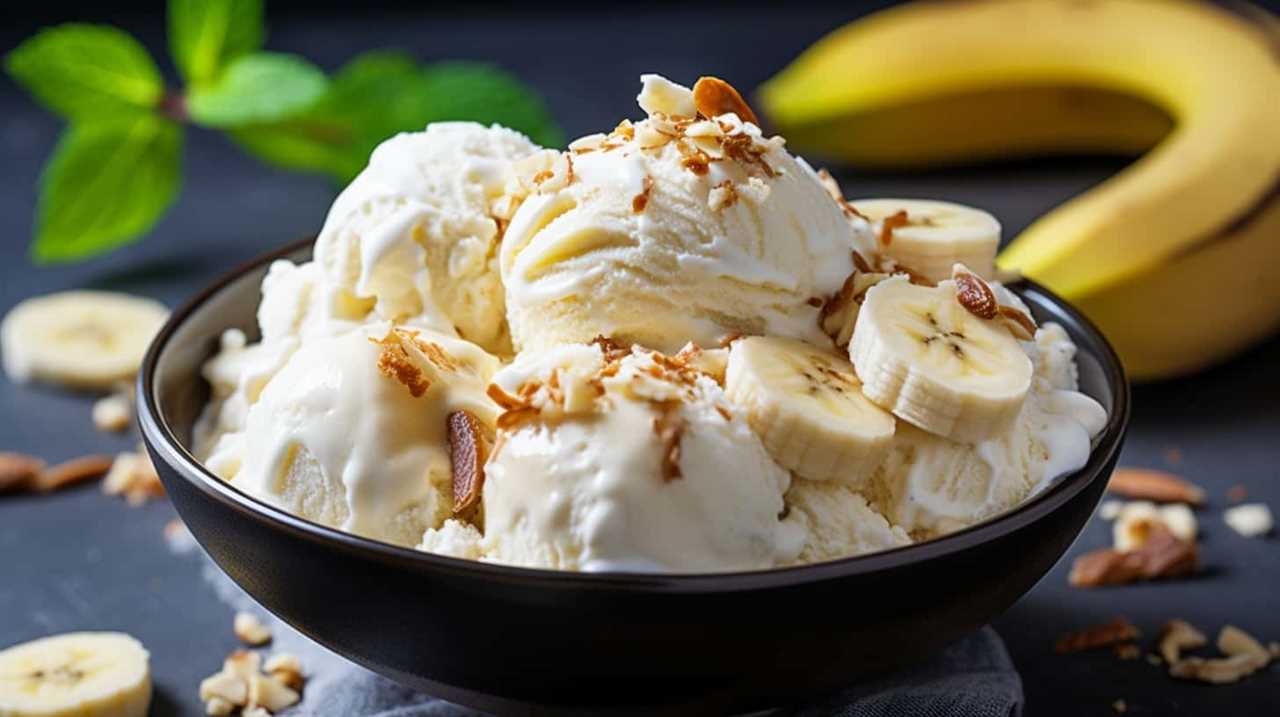
Can I Use the Easy Ice Cream Guide to Create a Drawing of Ice Cream?
Yes, you can use the Easy Homemade Ice Cream guide to create a drawing of ice cream. The guide provides detailed instructions on how to make delicious ice cream at home, which can serve as inspiration for your art. So, grab some paper and let your creativity flow!
Conclusion
Drawing ice cream can be a fun and creative activity that anyone can enjoy. By following the steps outlined in this article, you can easily create a delicious-looking ice cream cone on paper.
Remember to choose the right materials, sketch the cone, add the scoops of ice cream, and top it off with delicious toppings. For example, imagine drawing a strawberry ice cream cone with chocolate syrup and sprinkles, making it look so realistic that it could be mistaken for the real thing.
Beyond the realm of flavor and technique, Adriano recognizes the importance of sustainability and conscious consumption. His writing often explores eco-friendly practices within the ice cream industry, highlighting the use of locally sourced ingredients, reducing waste, and supporting ethical production methods.
Popular Flavors
What Makes Cream Essential in Ice Cream?

Have you ever pondered what the specific ingredient known as cream in ice cream really is?
Well, we’ve got the scoop for you! Cream plays a crucial role in the production of this frozen treat, affecting both its texture and taste.
In this article, we’ll delve into the different types of cream, its fat content, and how it contributes to the creamy goodness of ice cream.
Get ready to indulge in some deliciously informative knowledge about cream for ice cream!
Key Takeaways
- Cream is a key ingredient in ice cream production and contributes to its texture and taste.
- Cream’s high fat content lowers the freezing point of ice cream mixture, resulting in a smooth texture.
- Cream enhances the flavor of ice cream by adding richness and depth.
- Cream can be used in various ways such as a topping or to create sauces, enhancing the overall quality and sensory experience of ice cream.
Types of Cream
There are several types of cream that can be used to make ice cream. When it comes to whipped cream desserts, heavy cream is the go-to choice. With its high fat content, it whips up to a light and fluffy texture, perfect for topping off sundaes or cakes.
For cream-based sauces, a combination of heavy cream and half-and-half is often used. This creates a rich and velvety texture that coats pasta or vegetables beautifully.
Additionally, there’s also light cream, which has a lower fat content and is commonly used in coffee or tea.
Each type of cream brings its own unique qualities to the table, allowing for endless possibilities in creating delicious frozen treats or savory sauces.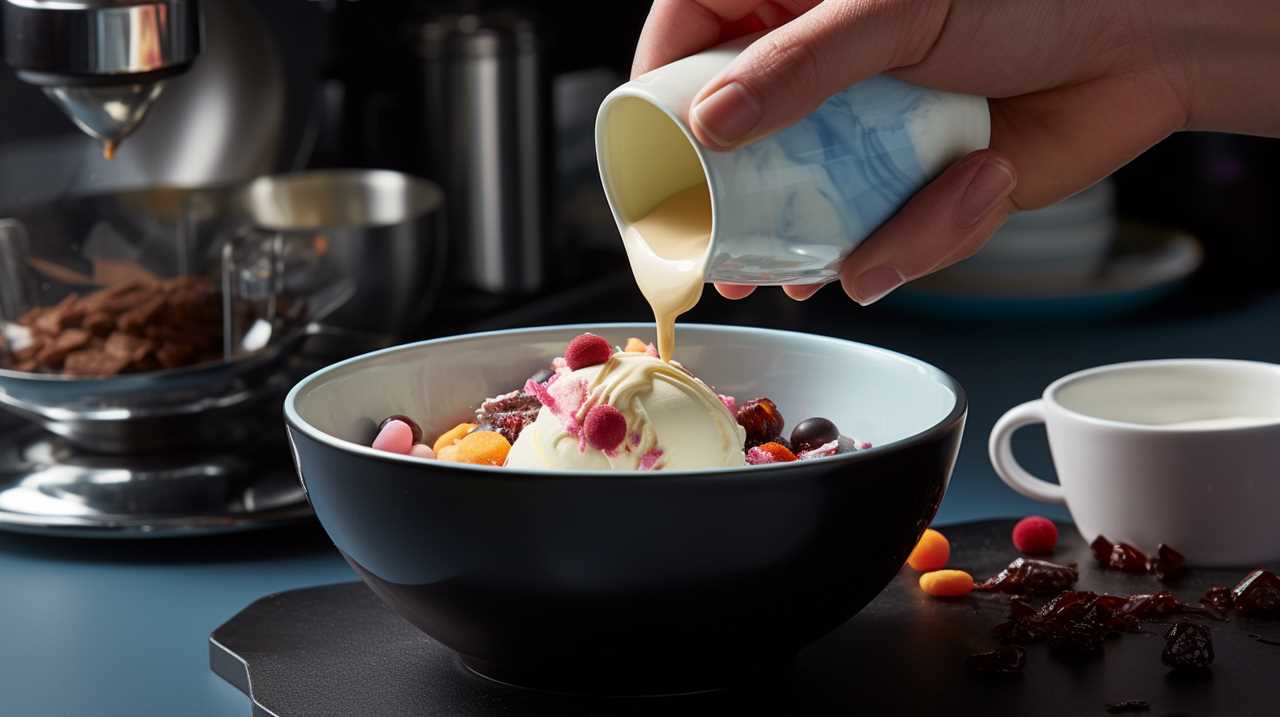
Cream and Fat Content
When considering cream for ice cream, it’s important to understand the relationship between cream and its fat content. Here are three key points to consider:
- Cream and Nutritional Value: Cream is known for its high-fat content, which gives ice cream its rich and creamy texture. However, it’s important to note that cream is also a good source of essential nutrients such as vitamins A, D, and E. These vitamins play a crucial role in maintaining healthy skin, bones, and overall immune function.
- Cream and Shelf Life: The fat content in cream helps to extend the shelf life of ice cream. Fat acts as a protective barrier, preventing the growth of bacteria and slowing down the rate of spoilage. This is particularly important for commercially produced ice cream, which often needs to have a longer shelf life to meet market demands.
- Choosing the Right Fat Content: When making homemade ice cream, it’s important to choose the right fat content in the cream. Higher fat content will result in a richer and creamier texture, while lower fat content will yield a lighter and less indulgent ice cream. Consider your personal preference and dietary needs when selecting the fat content for your ice cream recipe.
Cream in Ice Cream Production
To produce ice cream, we use cream as a key ingredient in the manufacturing process. Cream is sourced from cream suppliers, who ensure its quality and freshness. Proper cream storage and handling are crucial to maintain its integrity and prevent any contamination. Cream should be stored at temperatures below 40°F (4°C) to prevent spoilage and maintain its freshness. It should also be handled with clean utensils to avoid any cross-contamination. Cream suppliers play a vital role in providing high-quality cream that meets the standards required for ice cream production. By partnering with reputable suppliers and implementing proper storage and handling practices, we ensure that the cream used in our ice cream is of the highest quality. In the next section, we will explore how cream contributes to the texture of ice cream.
Table: Cream Suppliers and Storage and Handling | Aspect | Importance | | —————— | ——————————— | | Cream Suppliers | Ensure quality and freshness | | Cream Storage | Below 40°F (4°C) | | Cream Handling | Clean utensils to avoid contamination |
Now let’s delve into how cream affects the texture of ice cream.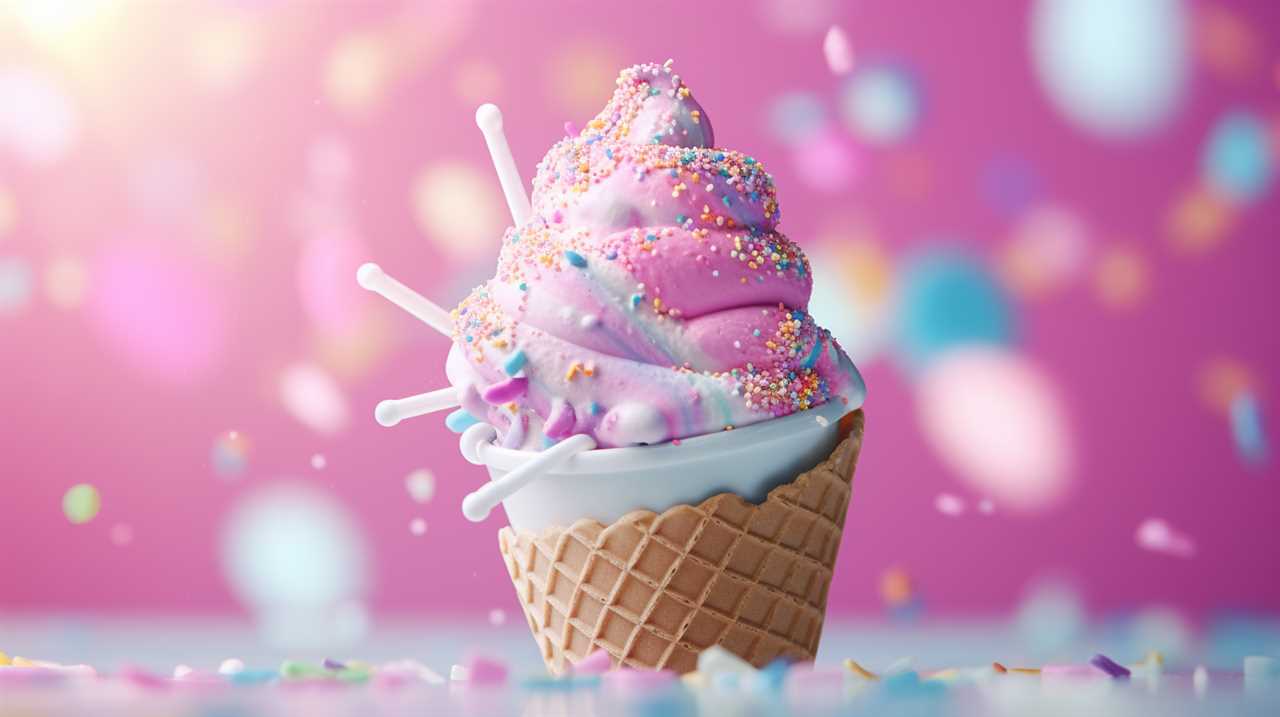
Cream and Texture
Cream plays a crucial role in determining the texture of ice cream. Here are three key factors that affect the texture of ice cream:
- Cream and Freezing Point: Cream contains a high fat content, which lowers the freezing point of the ice cream mixture. This is essential for creating a smooth and creamy texture. The lower freezing point allows the mixture to freeze more slowly, preventing the formation of large ice crystals and resulting in a smoother mouthfeel.
- Cream and Stabilizers: Stabilizers, such as gelatin or egg yolks, are often added to ice cream to improve its texture. Cream acts as a carrier for these stabilizers, helping them distribute evenly throughout the mixture. Stabilizers help prevent the formation of ice crystals and contribute to a smoother, creamier texture.
- Cream Fat Content: The fat content in cream contributes to the richness and creaminess of ice cream. Higher fat content leads to a smoother texture, as the fat molecules coat the ice crystals, preventing them from clumping together. Cream with a higher fat content will result in a more indulgent and luxurious ice cream experience.
Cream and Taste
We love the taste that cream brings to ice cream. Cream isn’t only responsible for the smooth and creamy texture of ice cream but also plays a significant role in enhancing its flavor. The high fat content in cream adds richness and depth to the overall taste, making each spoonful a delightful experience.
Cream acts as a carrier for flavors, allowing them to blend harmoniously and creating a balanced palate. Additionally, cream provides a subtle sweetness that complements the sweetness of the ice cream base and other ingredients.
When it comes to toppings, cream can be used in various forms such as whipped cream or as a base for decadent sauces, further enhancing the overall taste and adding a luxurious touch. With cream, ice cream becomes a truly indulgent treat.
Frequently Asked Questions
Can Cream Be Substituted With Any Other Ingredient in Ice Cream Production?
Cream can be substituted with alternative ingredients in ice cream production. Cream substitutes such as milk, yogurt, or coconut milk can be used to achieve a similar creamy texture and taste.
Are There Any Health Benefits Associated With Consuming Cream in Ice Cream?
There are no health benefits associated with consuming cream in ice cream. In fact, it can be detrimental to our health due to its high fat content. However, there are alternative ingredients that can be used to make healthier ice cream options.
Can Lactose-Intolerant Individuals Consume Ice Cream Made With Cream?
Yes, lactose-intolerant individuals can enjoy ice cream made with cream alternatives. There are various lactose-free alternatives available that provide the same creamy texture and taste without causing discomfort.
Does the Type of Cream Used Affect the Melting Rate of Ice Cream?
When comparing the melting rate of ice cream, the type of cream used is a crucial factor. Cream substitutes may affect the texture and stability of the ice cream, leading to different melting rates.
Are There Any Specific Regulations Regarding the Labeling of Cream in Ice Cream Products?
Labeling regulations for cream in ice cream products vary by country. It is important to accurately indicate the type of cream used and any cream substitutes. These regulations help ensure consumers make informed choices about what they are consuming.
Is Cream the Main Ingredient in Gluten Free Ice Cream?
Yes, cream is a main ingredient in many gluten free ice cream options. It provides a rich and creamy texture to the ice cream, making it a popular choice for those with gluten sensitivities. When choosing gluten free ice cream options, it’s important to check the label for any gluten-containing ingredients.
Conclusion
In conclusion, cream is a vital ingredient in ice cream production, contributing to both its texture and taste. The type of cream used, along with its fat content, greatly affects the final product.
Cream adds richness and smoothness to ice cream, making it a creamy and indulgent treat. So next time you enjoy a scoop of ice cream, remember to thank the cream for its contribution in creating that delightful frozen dessert.
Keep calm and cream on!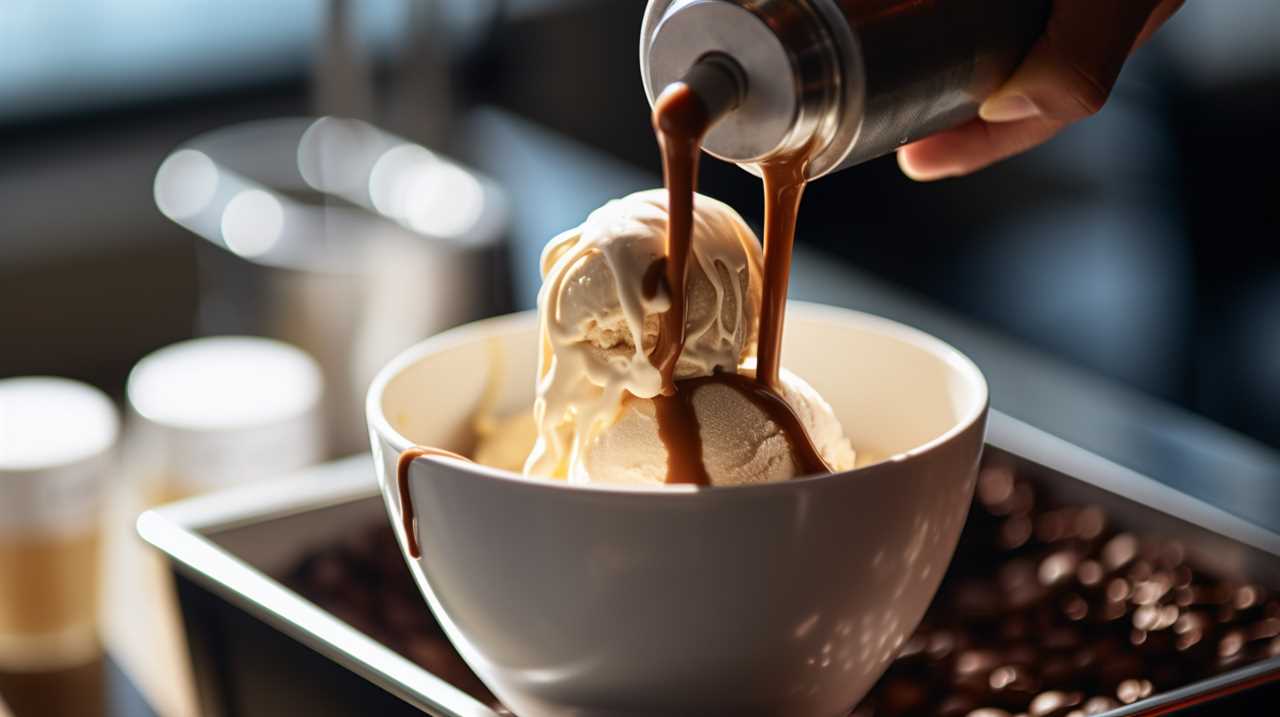
Beyond the realm of flavor and technique, Adriano recognizes the importance of sustainability and conscious consumption. His writing often explores eco-friendly practices within the ice cream industry, highlighting the use of locally sourced ingredients, reducing waste, and supporting ethical production methods.
Popular Flavors
How Does Ice Cream Make You Thirsty: A Simple Explanation
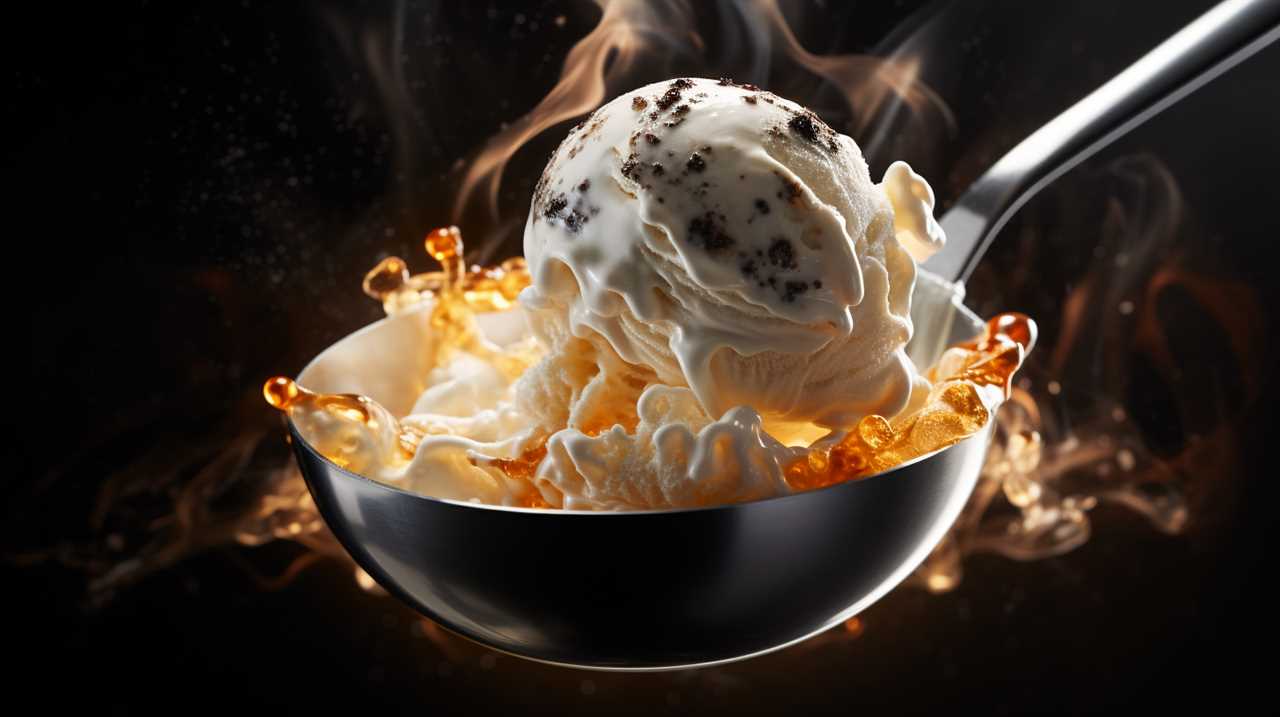
You may believe that enjoying a scoop of ice cream could satisfy your thirst, but surprisingly, it usually has us grabbing for a water glass.
So, why does ice cream make us thirsty? In this article, we will delve into the science behind this phenomenon.
From the role of sugar and salt content to the cooling effect on our salivary glands, we will uncover the fascinating reasons behind our sudden thirst after enjoying a frozen treat.
Key Takeaways
- Sugar in ice cream triggers insulin release, leading to increased thirst.
- The cold temperature of ice cream stimulates salivary glands, leading to excess saliva production and a feeling of thirst.
- Ice cream contains high levels of salt, which can increase fluid loss and contribute to dehydration.
- The brain’s response to the cold temperature of ice cream can initiate a cooling response, including vasoconstriction and reduced heat loss.
The Role of Sugar in Ice Cream
In our exploration of why ice cream makes us thirsty, let’s dive into the role that sugar plays in this frozen treat.
Sugar’s impact on hydration is a significant factor in understanding why ice cream can leave us feeling parched. When we consume sugary foods like ice cream, our bodies respond by releasing insulin to regulate blood sugar levels. This insulin response triggers a chain of events that can lead to increased thirst.
The link between sugar and thirst lies in the fact that consuming large amounts of sugar can cause a temporary imbalance in fluid levels within our cells. As a result, our bodies attempt to restore equilibrium by signaling the brain that we need to drink more water.
The Cooling Effect on Salivary Glands
As we continue exploring why ice cream makes us thirsty, let’s now delve into the impact of the cooling effect on our salivary glands.
When we consume ice cream, the low temperature of the treat causes a physiological response in our bodies. The cold sensation triggers our salivary glands to produce more saliva, resulting in what we commonly refer to as ‘mouth watering.’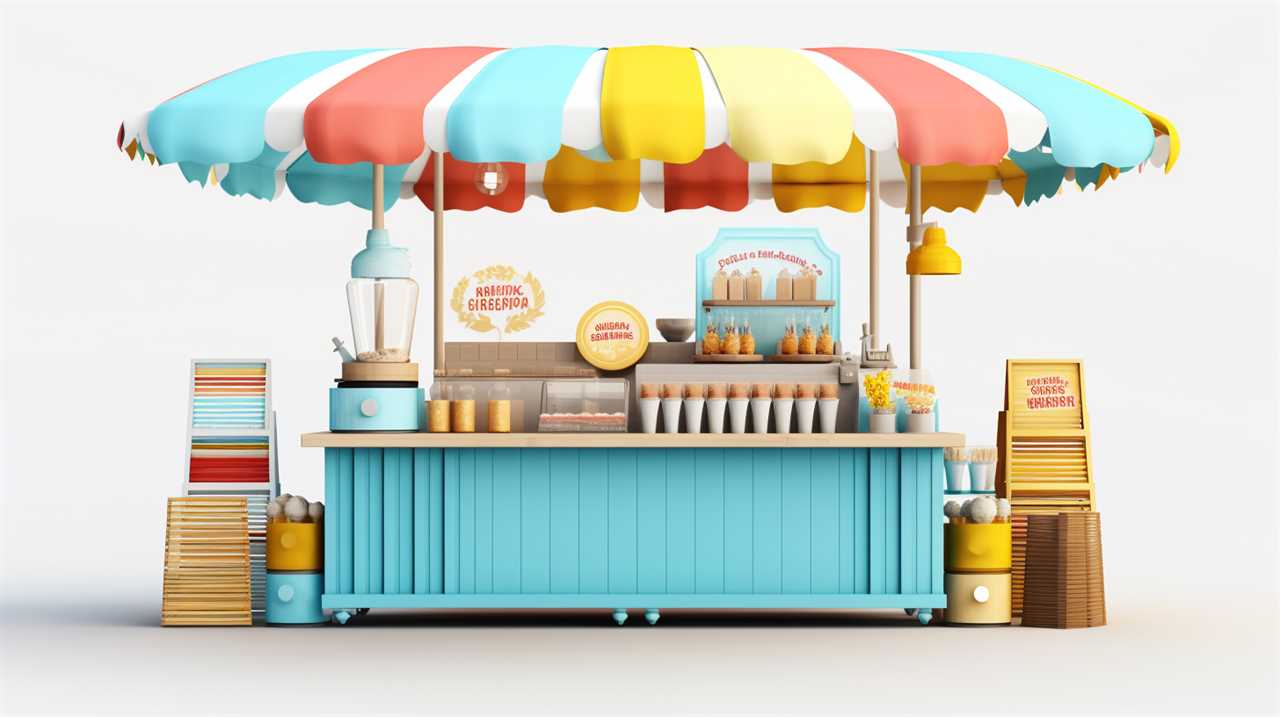
This increase in saliva production is a natural reaction to the cooling effect of the ice cream. The purpose of this response is to lubricate and moisten our mouths, making it easier to chew and swallow the cold treat. However, this excess saliva can also contribute to the feeling of thirst that follows consuming ice cream.
Now, let’s explore the connection between dehydration, salt content in ice cream, and the subsequent thirst it induces.
Dehydration and Salt Content in Ice Cream
Now let’s explore how dehydration and the salt content in ice cream contribute to the feeling of thirst it induces.
When we indulge in a delicious scoop of ice cream, we may not realize that it can actually dehydrate us. Here’s why:
- Ice cream contains high levels of salt, which can have a dehydrating effect on the body.
- Salt increases the osmolarity of our blood, leading to water being drawn out from our cells and into the bloodstream.
- This can result in increased urine production and fluid loss, ultimately contributing to dehydration.
- To prevent dehydration, it’s important to consume an adequate amount of water throughout the day.
- The recommended daily water intake for adults is around 8 cups or 2 liters.
Understanding the link between dehydration and salt content in ice cream helps us make informed choices about our fluid intake.
Now, let’s delve into how ice cream interacts with our taste buds and sensory perception.
Interaction With Taste Buds and Sensory Perception
Exploring the interaction between ice cream and our taste buds, we find that it tantalizes our senses and activates a cascade of pleasurable sensations. Our taste buds play a crucial role in our perception of flavor preferences and are responsible for detecting the five basic tastes: sweet, salty, sour, bitter, and umami. When we consume ice cream, the taste buds on our tongue come into contact with the cold, creamy treat, triggering a sensory experience that is both delightful and refreshing. The combination of the sweet flavor and the cold temperature creates a unique sensation that is highly enjoyable. Additionally, taste bud sensitivity can vary among individuals, which explains why some people may experience a stronger response to the flavors in ice cream than others. By understanding the intricate relationship between ice cream and our taste buds, we gain insight into why this frozen dessert is so universally loved.
| Taste Bud Sensitivity | Flavor Preferences | Sensory Perception |
|---|---|---|
| Varies among individuals | Sweet, salty, sour, bitter, umami | Delightful, refreshing, enjoyable |
The Brain’s Response to Cold Temperature
When exposed to cold temperature, our brain responds by activating various physiological mechanisms to regulate body temperature. The brain’s response to cold temperature is a complex process that involves intricate communication between different parts of the brain and the body. Here are some key ways in which the brain reacts to cold:
- Vasoconstriction: The brain signals blood vessels to constrict, reducing blood flow to the skin and extremities.
- Shivering: The brain triggers muscle contractions to generate heat and increase body temperature.
- Activation of brown fat: The brain activates brown adipose tissue, which generates heat by burning stored fat.
- Release of hormones: The brain releases hormones such as adrenaline and thyroxine to increase metabolism and heat production.
- Behavioral responses: The brain prompts behaviors like seeking warmth or putting on extra layers to protect against the cold.
Understanding the brain’s response to cold temperature provides insights into how our body adapts and maintains its temperature in challenging environmental conditions.
Frequently Asked Questions
Can Eating Ice Cream Too Quickly Cause Brain Freeze?
Yes, eating ice cream too quickly can cause brain freeze. When we consume cold foods rapidly, the cold temperature stimulates the nerves in our palate, resulting in a temporary headache-like sensation known as brain freeze.
Does the Type of Ice Cream Affect How Thirsty You Feel Afterwards?
Does ice cream with high sugar content make us more thirsty? Does the texture of the ice cream affect how thirsty we feel afterwards? These are questions that we will explore to gain a deeper understanding of why ice cream makes us thirsty.
Is It True That Eating Ice Cream Before Bed Can Disrupt Sleep?
Eating ice cream before bed: Does it affect sleep quality? Is it linked to weight gain? Research suggests that indulging in this treat at night may disrupt sleep patterns and contribute to weight gain.

Can Drinking Water While Eating Ice Cream Help Prevent Thirst?
Drinking water while eating ice cream can help maintain hydration levels and prevent excessive thirst. Our drinking habits play a crucial role in balancing fluid intake, especially when consuming dehydrating foods like ice cream.
Does the Temperature of the Ice Cream Affect How Thirsty It Makes You?
The temperature of the ice cream can affect how thirsty it makes us. Additionally, the sugar content in ice cream can have an impact on our thirst and hydration levels.
Is Ice Cream Always Thirst-Inducing, or Are There Healthier Options That Won’t Have This Effect?
When it comes to cravings for something cold and sweet, there are definitely healthier options for ice cream that won’t leave you feeling more thirsty. Frozen yogurt, sorbet, or fruit popsicles can satisfy your sweet tooth without causing dehydration. These healthier alternatives can still be satisfying while keeping you refreshed.
Conclusion
In conclusion, the combination of sugar, cold temperature, and salt content in ice cream can contribute to increased thirst.
The sugar in ice cream can lead to dehydration, while the cold temperature can stimulate the salivary glands and temporarily decrease saliva production.
Additionally, the interaction with taste buds and sensory perception may also play a role in making us feel thirsty.
So next time you indulge in a scoop of ice cream, ask yourself: is it really quenching my thirst or just making me crave more?
Beyond the realm of flavor and technique, Adriano recognizes the importance of sustainability and conscious consumption. His writing often explores eco-friendly practices within the ice cream industry, highlighting the use of locally sourced ingredients, reducing waste, and supporting ethical production methods.
-

 Beginners Guides2 weeks ago
Beginners Guides2 weeks agoCreamy Remedies: Good Ice Cream Choices for Acid Reflux Relief
-
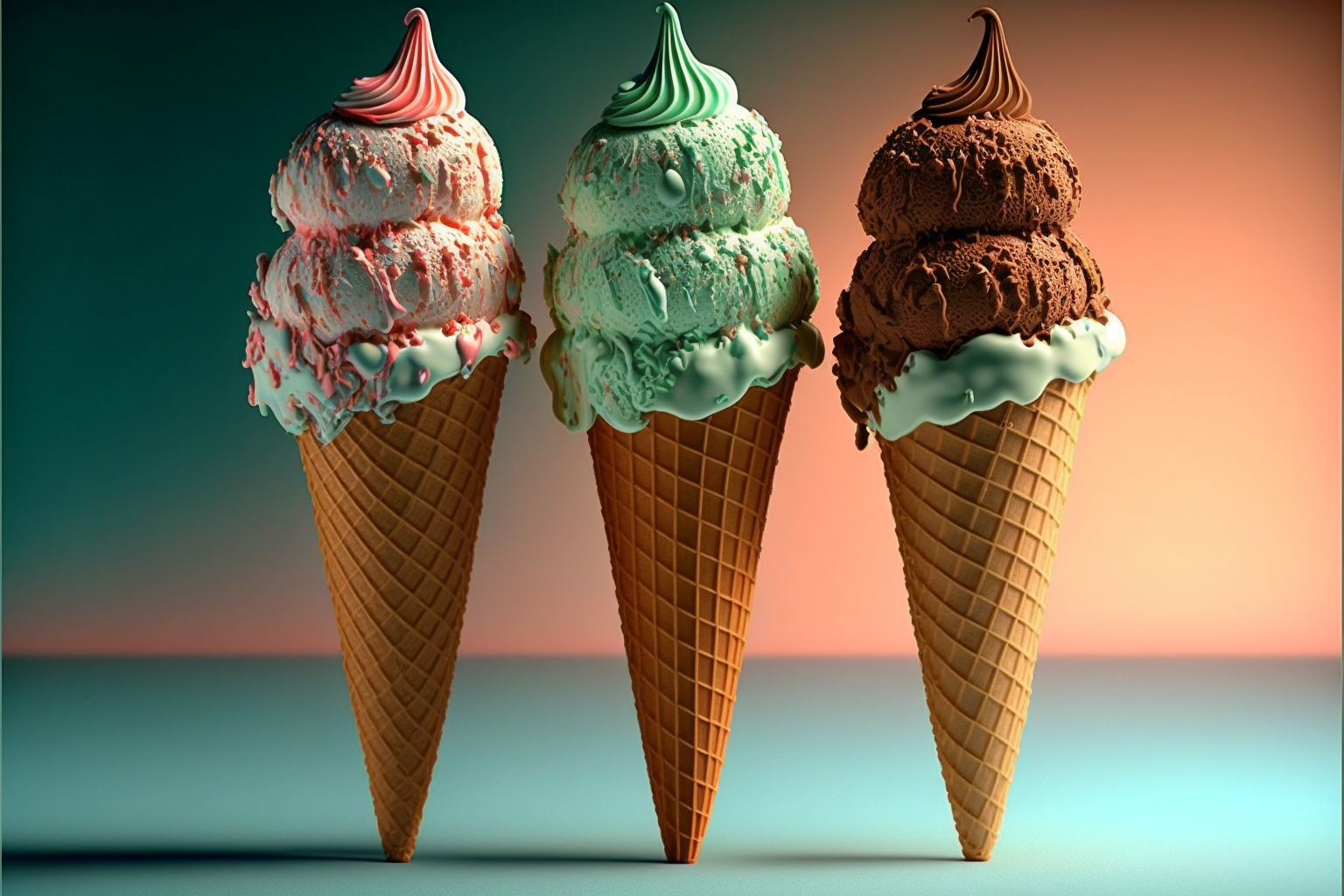
 Beginners Guides2 weeks ago
Beginners Guides2 weeks agoHow to Do When Your Ice Cream Tastes Gritty: Quick Fixes
-
Beginners Guides1 week ago
10 Differences Between Ice Cream and Popsicles
-

 About Ice Cream1 month ago
About Ice Cream1 month agoWhat Military Diet Rules Allow Ice Cream?
-

 Creative Ice Cream Recipes2 weeks ago
Creative Ice Cream Recipes2 weeks agoWho Makes Dairy Queen Ice Cream
-

 About Ice Cream1 month ago
About Ice Cream1 month ago10 Reasons Why You Feel Like Throwing Up When You Eat Ice Cream
-

 About Ice Cream1 month ago
About Ice Cream1 month agoHow Pouring Milk on Ice Cream Causes Ice Crystals
-

 About Ice Cream20 hours ago
About Ice Cream20 hours agoWhat Makes Ice Cream Essence Essential in Creamy Treats?
